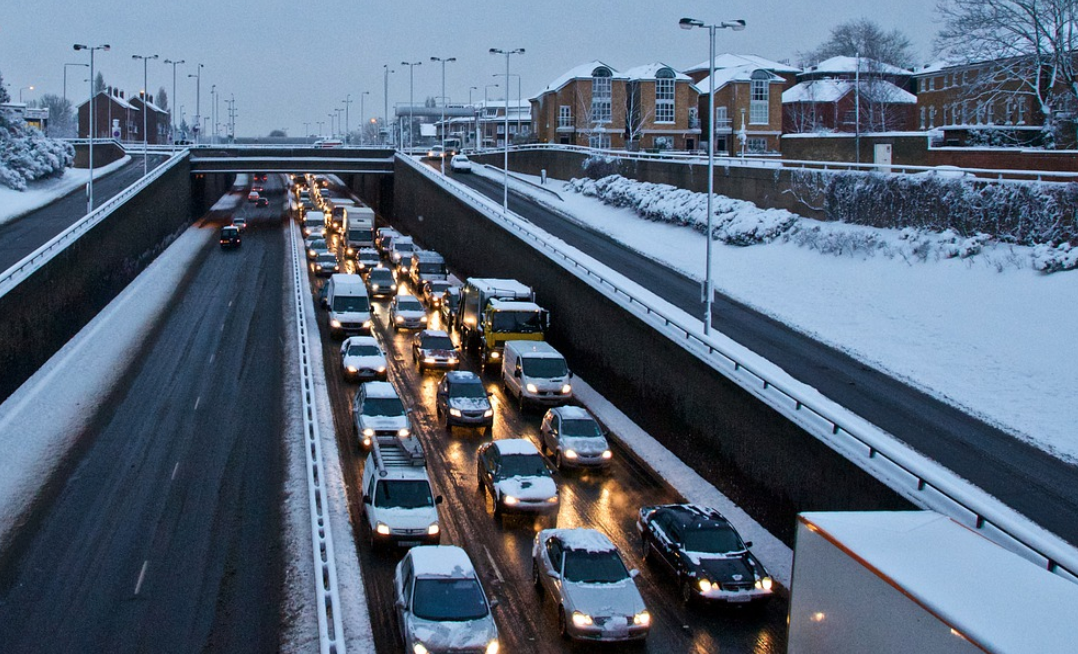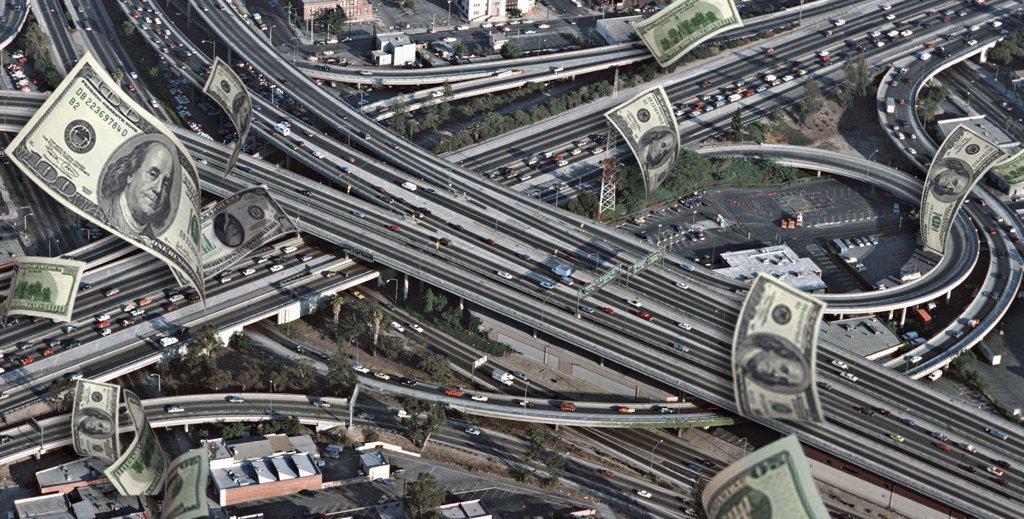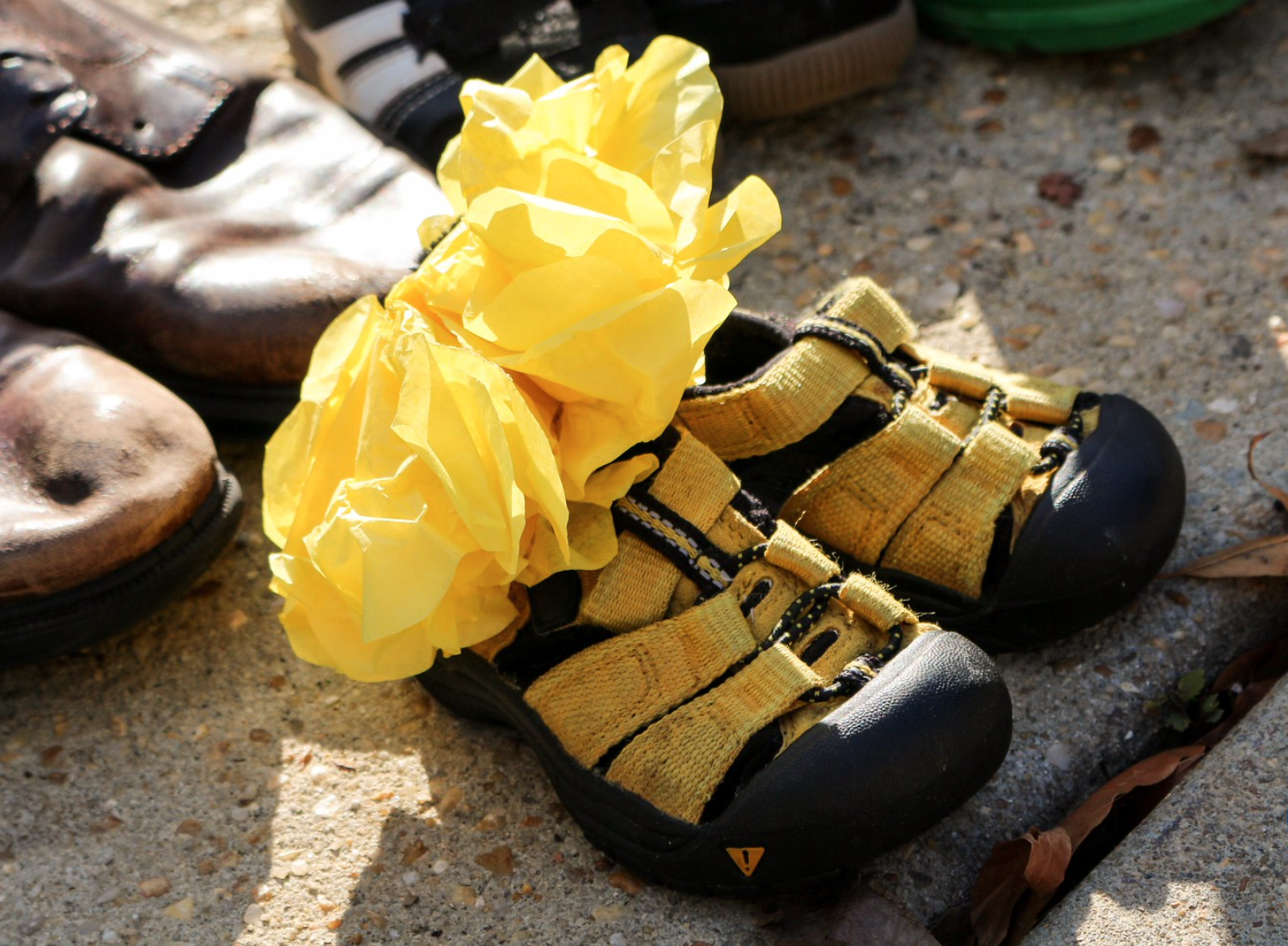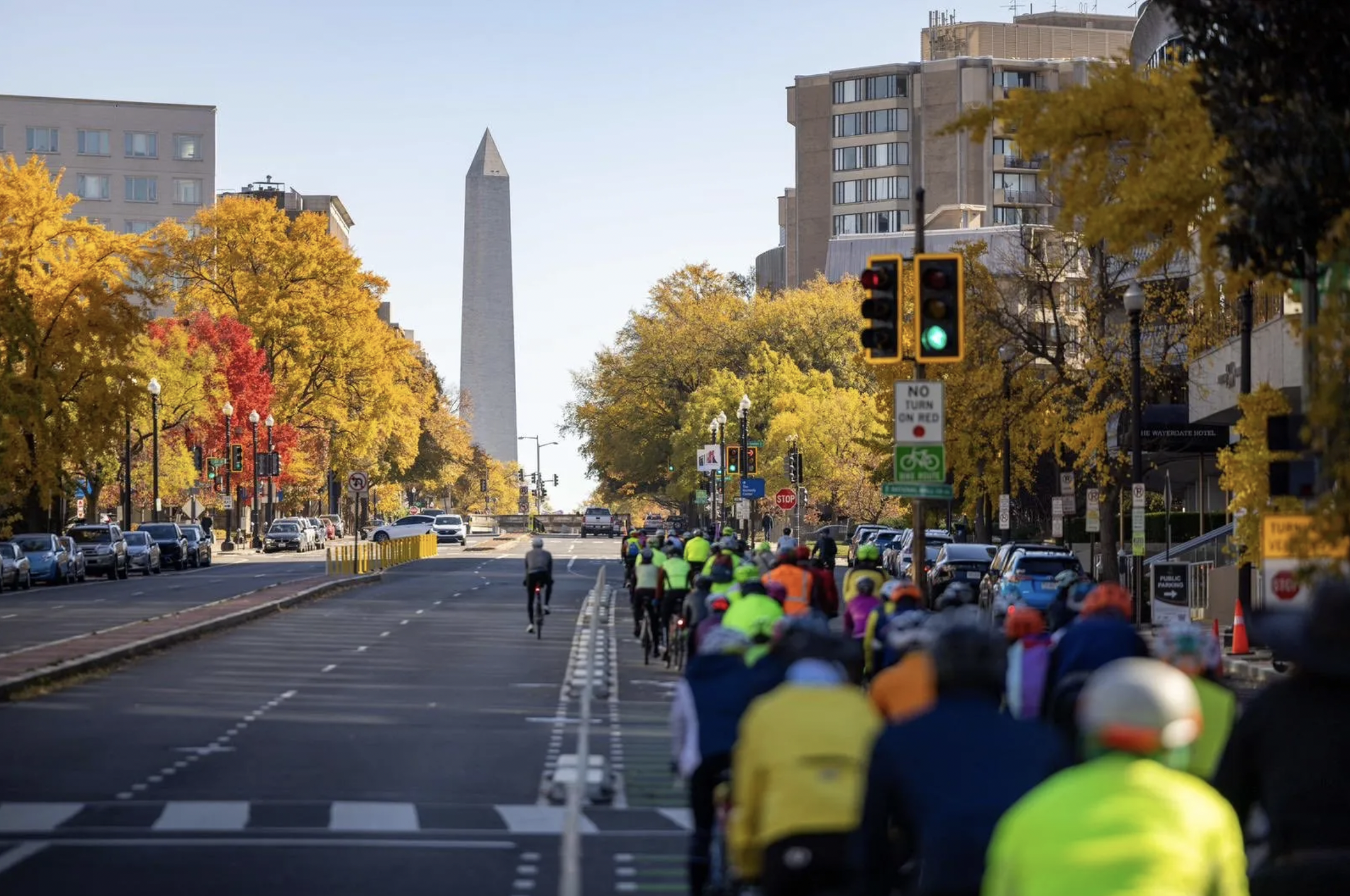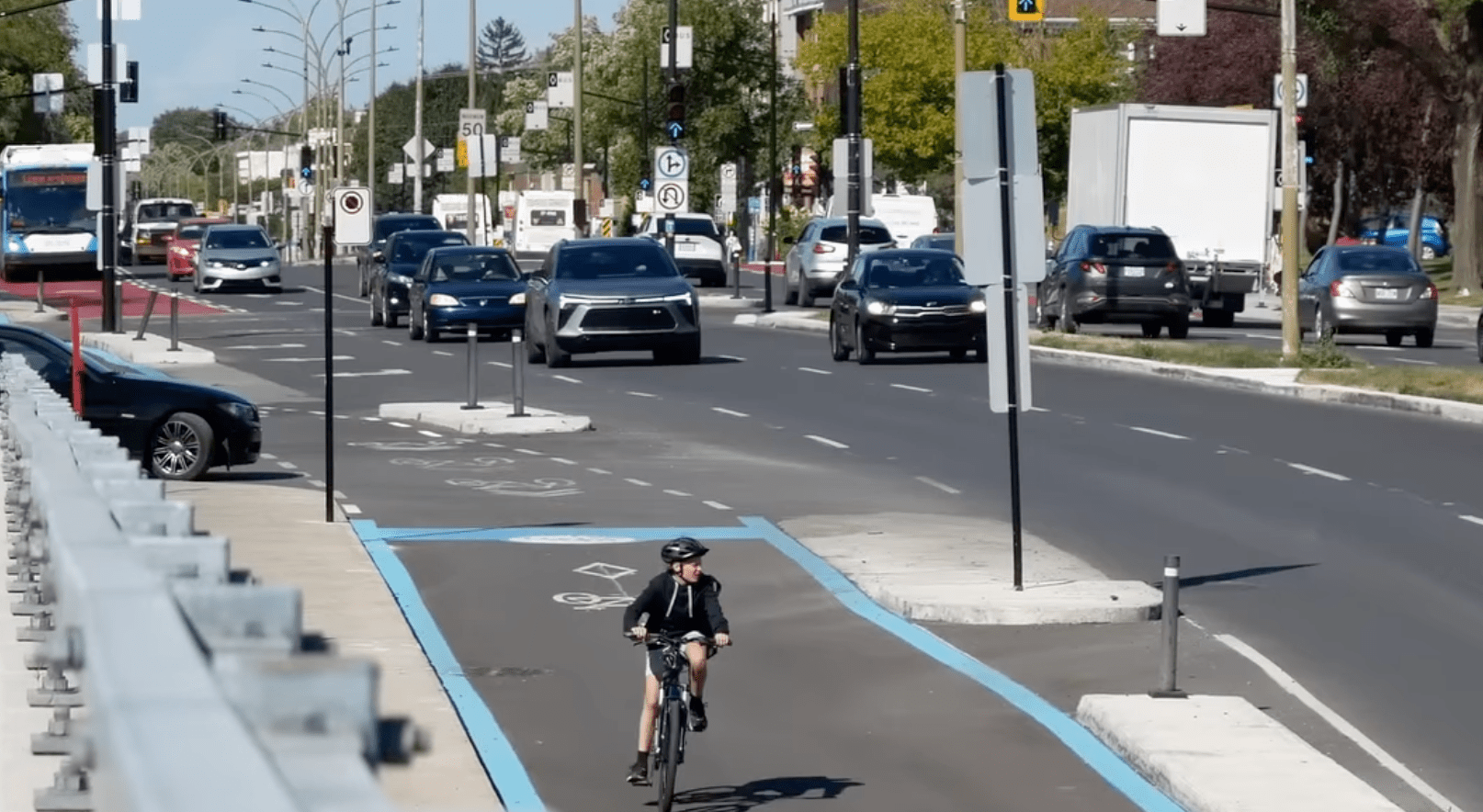A record-breaking snowstorm that left countless drivers, including a U.S. senator, stranded overnight on a Virginia highway in freezing temperatures has some advocates questioning the region's auto-centric transportation and land use policies — especially as climate change threatens to make extreme weather events even more common.
Early on Jan. 4, outlets across the country reported that hundreds if not thousands of motorists had been trapped for nearly a full day along a stretch of Virginia's Interstate 95 near the town of Fredericksburg, after snowy conditions caused a pile-up of six tractor trailers, blocking the southbound segment of the road. Traffic was brought to standstill for at least 50 miles as emergency services personnel struggled to reach vehicle occupants, some of whom were without food, water, or fuel for hours.
One of them was Sen. Tim Kaine (D-Va.), who tweeted Tuesday evening that he was still stuck behind the wheel after more than 27 hours on the road. His commute to the Capitol, he reported, usually takes just two hours.
This is a systemic failure of a fundamentally flawed transportation system https://t.co/5nhMlv1pX6
— Sarah Goodyear (@buttermilk1) January 4, 2022
Hillary Clinton's running mate is probably not the only one for whom an already-punishing commute turned into an unprecedented nightmare. According to a recent study, about 42 percent of Fredericksburg's workforce commutes outside the city, with 10 percent of those drivers making long hauls of three hours or more — and like the Senator, their most common destination is the District of Columbia, where researchers say they can access significantly higher wages.
Even in communities within easier reach of the nation's capital, though, long hours in the car are too often the norm in the so-called DMV zone of the District, Maryland and Virginia. The average commute time for a solo driver in that metro area was 40 minutes in 2019, about 45 percent longer than the average American's daily journey of 27.6 minutes — and that's despite the fact that 20 percent of Washingtonians get to work on trains, more than four times the national average.
(According to Amtrak, the Carolinian line, which runs from Fredericksburg to D.C.'s Union Station, remained in operation for much of the storm, albeit with substantial cancellations and delays. To our knowledge, none of those passengers have so far reported anything like what the drivers trapped on I-95 have so far endured, though to be fair, other rail-riders weren't so lucky.)
The personal car cannot stand up to the infrastructure failures during extreme weather events brought on by climate change. We should invest in transportation projects that make us resilient to climate change. Not trapped by it. https://t.co/T0y02vjiOi
— Liz Cornish (@lizbybike) January 4, 2022
Local advocates say the region's failure to invest even more broadly in multimodal options than it already has may have set up the area for its current disaster — especially in the most far-flung suburbs, where many of D.C.'s workers live.
"Suburban road systems, where everyone is funneled into one mode and one critical arterial highway, are especially prone to complete breakdown," said Dan Malouff, a transportation planner based in northern Virginia. "We've seen that before with past storms, and the mess that is I-95 this week shows how precarious that system is. Not that transit or other modes can't have breakdowns too; obviously they can. But multimodal networks with multiple modes and paths to choose from are inherently more resilient than putting all of civilization's eggs in one basket. And for that kind of resiliency to exist, the other modes have to be not just present as tokens, but widely practical and convenient. "
Thousands of drivers have been at a virtual standstill for 18+ hours on a stretch of I-95 in Virginia, trapped in their cars in below-freezing temps, after a heavy snowstorm 'disabled vehicles and downed trees,' per the state's DOT. pic.twitter.com/lvbbELeZ9t
— NowThis (@nowthisnews) January 4, 2022
Malouff is not the only advocate to note that transportation leaders could be doing better to encourage multimodal travel — and to make those car-free commutes better and shorter, particularly during winter storms. Thanks in part to the capital's dense development pattern, about 32 percent of DC metro residents commute by transit, walking or biking, which is significantly more than 8.2 percent of Americans who do so nationwide, but that doesn't mean they can necessarily access essential services in their neighborhoods without getting in a car.
"In a land-use context where most people can't walk or take transit to daily necessities, [extreme weather] is going to hit even harder," said M. Nolan Gray, author of the forthcoming book, Arbitrary Lines: How Zoning Broke the American City and How to Fix It. "In so much of the DMV suburbs right now, people are finding that they can't even get groceries the moment that vehicular infrastructure starts to break down, to say nothing of commuting into work. This is the inevitable result of decades of planning decisions, designed to separate the basic components of urban life — residential here, commercial there, offices somewhere else. As these extreme weather events become more common, legalizing resilient, mixed-use neighborhoods will become even more important."
Have you cleared your sidewalk?: https://t.co/DMoKkM0nOg https://t.co/O7o3Xs3PBw
— Greater Greater Washington (@ggwash) January 4, 2022
For the lucky few who do live in people-centered neighborhoods, serious snow may still pose serious problems — because city leaders rarely clear it efficiently.
Locals noted that even in transit-rich D.C., private vehicle lanes and highways are still the top priority for snow clearance, while bus routes fall lower on the list, leaving many District-dwellers stranded Monday when Metrobus service ceased in the afternoon. Clearing bike lanes is an even lower priority, and maintaining snow-free sidewalks is largely left up to property owners, though enforcement against those who fail to get out the shovels is spotty at best, and local ordinances sometimes permit residents to leave walking paths impassable for up to 24 hours.
Fueled by a desire for space and liberated by remote work, homebuyers are pushing development ever deeper into the suburban outskirts of U.S. cities.@patrickcsisson reports: https://t.co/Q1sAeyOb1g
— Bloomberg CityLab (@CityLab) January 5, 2022
"When it comes to snow removal policies, they need to be revisited to be more multimodal," said Benito O. Pérez, Policy Director for D.C.-based nonprofit Transportation for America. "[We should be prioritizing] clearing bike lanes, major sidewalk corridors, roadways supporting mass transit, etc.] versus prioritizing high speed vehicle [routes alone]."
If more American cities took that advice to heart — and made real investments into sustainable transportation and land use reform — someday, snowstorms may transform U.S. neighborhoods into peaceful winter wonderlands, rather than harrowing highway hellscapes.
Lots of people on the street. The rare lone car is a loud intruder. pic.twitter.com/9o5t1mDqKB
— BeyondDC (@beyonddc) January 3, 2022
Update: Shortly after this story was filed, Sen. Kaine finally made it to the Capitol.
Ok after 27 hours on the road from Richmond to DC, very happy to be back in the Capitol and working on voting rights legislation this afternoon. pic.twitter.com/6XE45ZQUvq
— Tim Kaine (@timkaine) January 4, 2022
